Phonics worksheets activities for 8-Year-Olds
5 filtered results
-
From - To
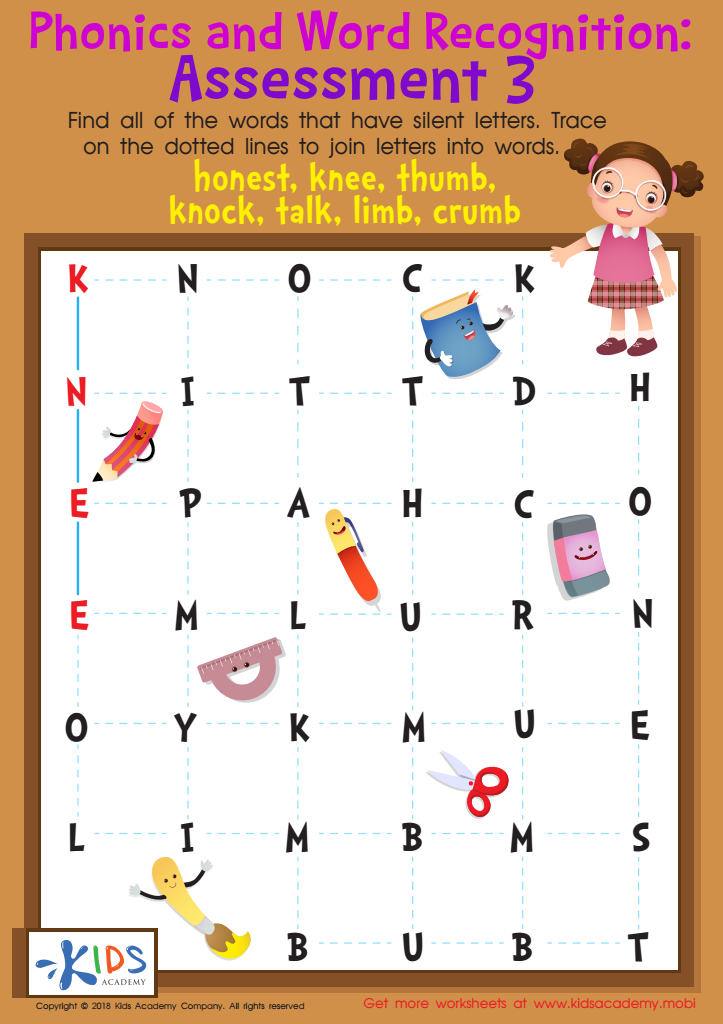

Phonics and Word Recognition: Assessment 3 Worksheet
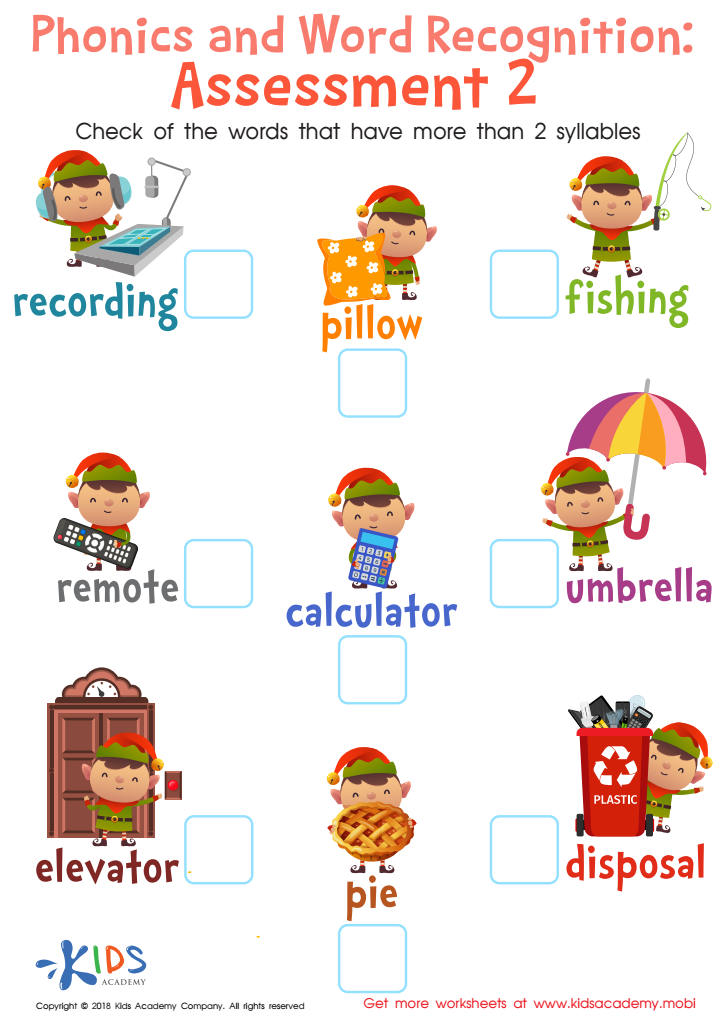

Phonics and Word Recognition: Assessment 2 Worksheet
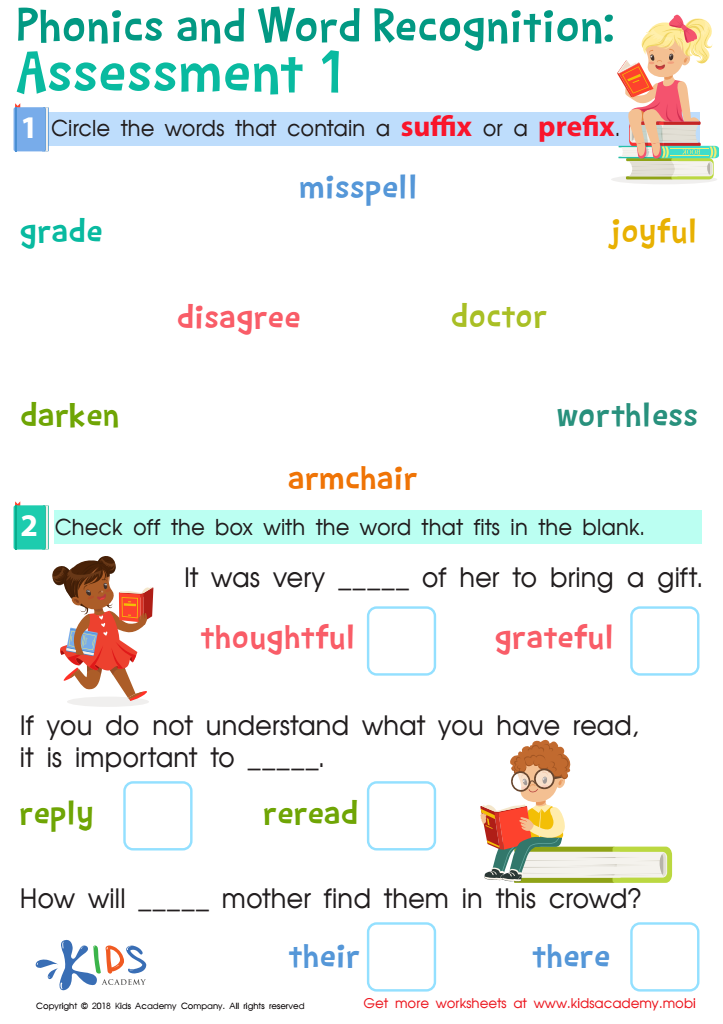

Phonics and Word Recognition: Assessment 1 Worksheet
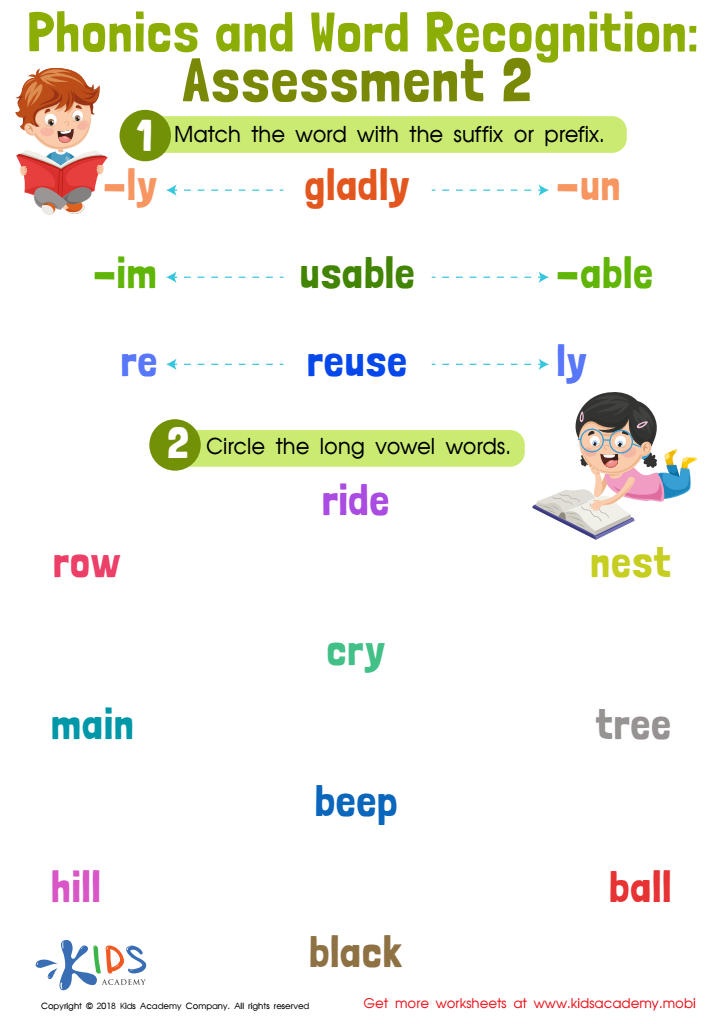

Phonics and Word Recognition: Assessment 2
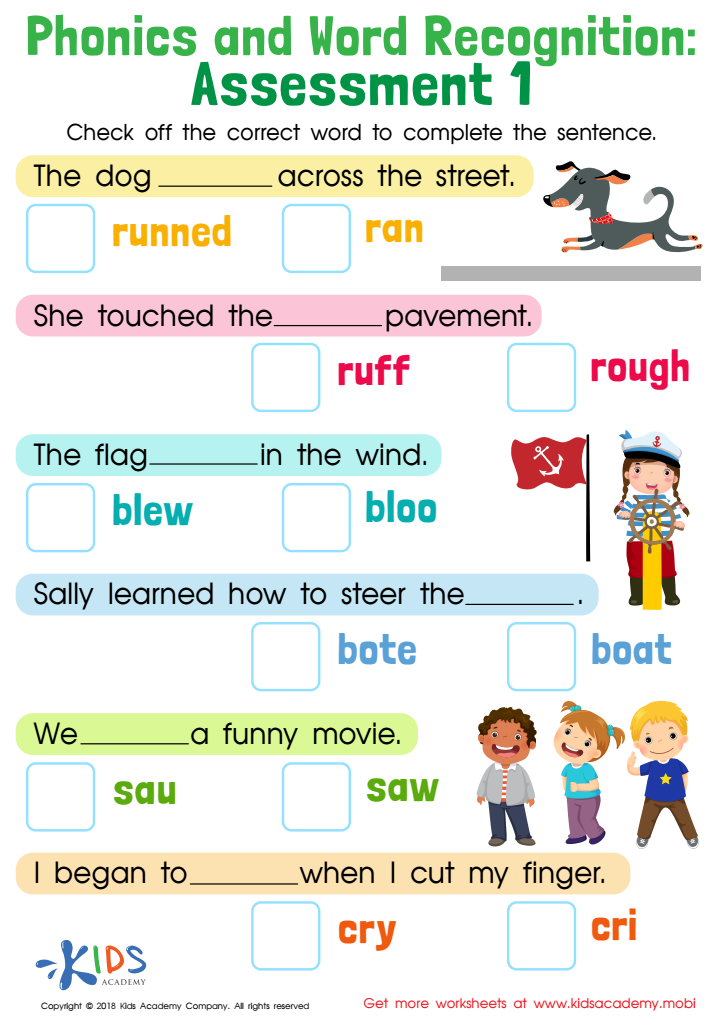

Phonics and Word Recognition: Assessment 1 Worksheet
Phonics worksheets activities stand as an invaluable tool in the realm of early education, particularly in the journey of learning to read and write. These activities, crafted with the purpose of blending learning with engagement, offer a structured and interactive approach to understanding the building blocks of the English language.
At the core, Phonics worksheets activities target the relationship between sounds and their corresponding letters or letter groups, laying a solid foundation for literacy. They serve as a bridge for young learners, guiding them through the complexities of phonemic awareness. This is crucial because grasping the concept of how letters combine to form words is the first step towards fluent reading and clear articulation.
Moreover, Phonics worksheets activities cater to a wide range of learning styles. Whether a child is a visual, auditory, or kinesthetic learner, these activities are designed to capture their attention and stimulate their learning senses. For visual learners, colorful worksheets with pictures and letters help in linking sounds to symbols. Auditory learners benefit from repeating sounds as they see them on the page, while kinesthetic learners can trace letters and engage in cut-and-paste activities, thereby reinforcing their learning through movement.
The adaptability of Phonics worksheets activities is another reason for their effectiveness. They can be easily integrated into daily teaching schedules, providing teachers and parents with a versatile resource that can be tailored to the individual needs of each student. Whether used in a classroom setting, for homeschooling, or as supplementary material, these activities can be adjusted in difficulty, ensuring that learners of all stages are both challenged and supported.
In conclusion, Phonics worksheets activities are more than just paper and pencil tasks; they are a dynamic and essential component of the literacy development process. By fostering a deep understanding of phonological patterns, they not only aid in reading and writing but also in developing a lifelong love for learning.

 Assign to the classroom
Assign to the classroom











